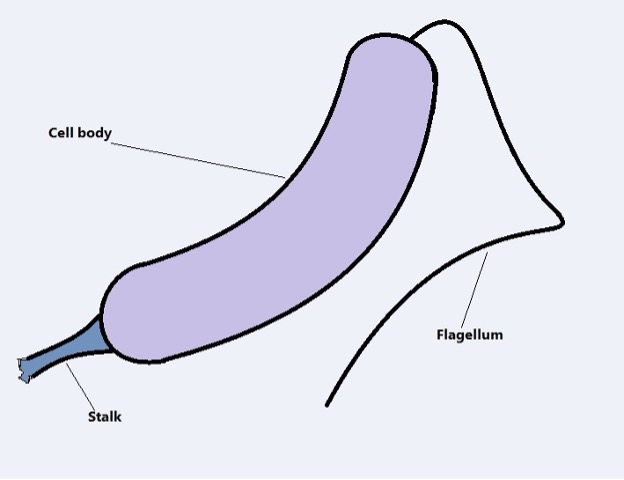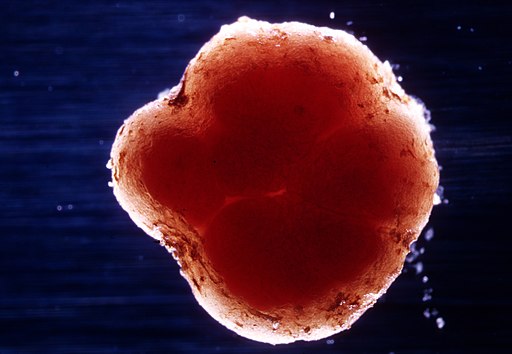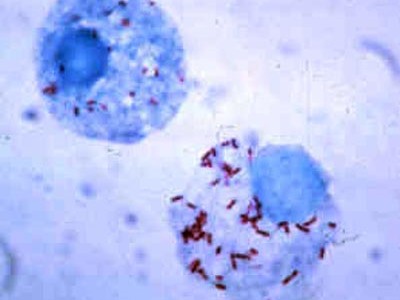Alphaproteobacteria
** Examples, Characteristics and Function
Overview
Alphaproteobacteria is a class of bacteria within the phylum Proteobacteria. Members of this group are diverse and widespread in different environments across the world. They are also some of the earliest life forms on earth with some species suspected of being the precursors of mitochondria in eukaryotic cells.
Currently, Alphaproteobacteria species are divided into more than 12 orders. While the majority are free-living, some of the species are pathogens while others survive through their mutually beneficial relationship with certain plants and animals.
Characteristics
Classification
Domain: Bacteria
Phylum: Proteobacteria
Class: Alphaproteobacteria
Orders: Rickettsiales, Caulobacterales, Pelagibacterales, Rhodospirillales, Rhodobacterales, Sphingomonadales, Rhizobiales, Magnetococcales, Kiloniellales, Parvularculales, Sneathiellales, Kordiimonadales, Holosporales
Morphology
Alphaproteobacteria are Gram-negative bacteria and thus consist of a thin peptidoglycan layer and an outer membrane (the space between the inner and outer membrane is known as the periplasm). The outer membrane consists of a glycolipid known as lipopolysaccharide that varies in structure depending on the species.
In addition to the glycolipid, studies have also identified a protein known as Envelope integrity protein A (EipA) on the outer membrane. This protein is associated with cell differentiation and cell cycle.
With regard to general morphology, Alphaproteobacteria species vary from rod and ovoid to coccus-shaped. Though different species exhibit differences in morphology, differences in morphology can also be identified in members of the same species.
For instance, while members of the genus Acidomonas are rod-shaped bacteria, Endobacter species are coccoid or rod-shaped. As well, species of the genus Granulibacter are coccobacillus or rod-shaped while Acetobacter species are ellipsoidal or rod-shaped.
* Alphaproteobacteria species also exhibit significant variation in size with the largest members measuring about 3 um in length.
The following are some of the measurements for some of the genera within this class:
- Acetobacter species: 0.4 to 1.0 um in diameter and 1.0 to 3.0 um in length
- Ameyamaea: 0.6 to 0.8 um in diameter and 1.0 to 1.8 um in length
- Gluconacetobacter: 0.5 to 0.9 um in diameter and 1.0 to 2.0 um in length
Another morphological characteristic identified among some of the species is the presence of a stalk. Also known as the prosthecae, the stalk is a thin extension that originates from the cell body of the bacteria.
It can be found in a number of genera including Caulobacter, Asticcacaulis, Brevundimonas, Hyphomonas, and Porphyrobacter among others. Generally, this structure is likely to be found in species that go through a dimorphic life cycle and serve an important role in attachment to surfaces.
Stalks are also important for reproduction through budding. Here, studies have shown that daughter cells develop at the tip of the stalk from where they are released once they have developed. In both budding and non-budding species, the stalks also aid in nutrient uptake.
As mentioned, these stalks originate from the cell body and attach to various surfaces. In oligotrophic habitats, this attachment also promotes nutrient uptake when the organism comes in contact with the appropriate nutrients.
Motility - Many Alphaproteobacteria are capable of motility by using flagella. The type of flagella present varies between different species. For example, Salinispira species are characterized by periplasmic flagella while members of the genus Acetobacter use peritrichous flagella.
Acidomonas and Ameyamaea species, on the other hand, move by means of polar flagella while members of the genus Endobacter use subpolar flagella for locomotion.
* Though motility by gliding is rare, it has been observed in a few species including members of the genera Pacificimonas and Acuticoccus.
Dimorphic life cycle - Dimorphic life cycle is common among stalked Alphaproteobacteria where cell division results in the production of two dissimilar daughter cells (asymmetric cell division).
For members of the genus Caulobacter, studies have shown every cell division to result in the production of two dissimilar daughter cells (cells with different morphological characteristics) under the influence of transcription factor CtrA.
Following binary fission, the bacterium Caulobacter crescentus divides to produce a swarmer progeny cell and a stalked cell. Like other stalked cells, the stalked daughter cell consists of a polar stalk used for adhesion to surrounding surfaces.
In addition to the stalk, these cells also produce exopolysaccharide, a macromolecule that promotes adhesion and provides protection in response to given environmental conditions.
Unlike the stalked cell, the swarmer daughter cell is characterized by a polar flagellum used for motility. It also requires favorable environmental conditions for DNA replication to occur. As well, they can undergo differentiation and give rise to stalked cells. Here, the flagellum is discarded and a stalk produced in its place.
* DNA replication starts shortly after cell division among stalked cells.
Habitat
As mentioned, Alphaproteobacteria is a diverse group with species that colonize different habitats across the globe. Here, the habitat in which they exist supports their way of life.
The following are different types of Alphaproteobacteria based on their way of life:
Phototrophic Alphaproteobacteria
Photosynthetic Alphaproteobacteria include species that are capable of converting light energy to chemical energy. Some of the most common photosynthetic Alphaproteobacteria are members of the genera Rhodobacter, Porphyrobacter, and Roseobacter.
Most of these bacteria are purple non-sulfur species that carry out photosynthesis under anoxygenic conditions. Depending on the species, the cell suspensions vary in color from brown and olive-green to brown-red and pink.
The pigments involved in photosynthesis are bacteriochlorophyll a or b can be found in the cytoplasmic membrane as well as lamellae and membrane stacks alongside carotenoids.
Because they are capable of photosynthesis, they are commonly found in the light where they can absorb light energy. However, the formation of the internal membrane and development of the photosynthetic pigments are negatively affected by oxygen. For this reason, they prefer anoxygenic conditions.
While some Alphaproteobacteria are capable of photosynthesis, they can still survive through chemoheterotrophy in the absence of sunlight.
* Bacteriochlorophyll α and some carotenoids have also been identified in some species that are incapable of photosynthesis (e.g. Roseibium species).
Photosynthetic members of the class Alphaproteobacteria can be found in marine and freshwater environments which provide conditions necessary for photosynthesis. For instance, Porphyrobacter species like Porphyrobacter donghaensis can be found in marine, freshwater, and some lakes with low soda concentrations.
As well, Roseobacter species are common in coastal marine habitats while Rhodobacter can be found in mud, soil, sludge, and aquatic environments like lakes and the ocean. In these habitats, these species can carry out photosynthesis in the absence of oxygen or access organic compounds in the absence of sunlight.
Some examples of Phototrophic Alphaproteobacteria include:
- Rhodobacter sphaeroides
- Rhodobacter blasticus
- Rhodobacter capsulatus
- Rhodobacter megalophilus
- Erythrobacter neustonensis
- Erythrobacter litoralis
- Erythrobacter tepidarius
- Roseobacter litoralis
- Ruegeria pomeroyi
Heterotrophic Alphaproteobacteria
While a good number of Alphaproteobacteria are capable of converting light energy to chemical energy, there are many others that rely on carbon compounds for energy.
They can be divided into several groups that include:
Chemolithoorganotrophs - Members of the genus Elioraea represent chemolithoorganotrophic Alphaproteobacteria. Unlike phototrophs, these organisms obtain energy through the oxidation of various organic and inorganic compounds in their surroundings.
Some species in this group (e.g. Elioraea tepidiphila) are thermophilic and can be found in hot springs at temperatures of between 45 and 60°C.
Methylotroph - Methylotrophs include species that use compounds with a single carbon like methane as a source of energy. Methylarcula species are examples of methylotrophs in nature. They can be found in a number of aquatic environments including marine habitats, sludge, and wastewater.
Some examples of Heterotrophic Alphaproteobacteria include:
- Elioraea tepidiphila
- Elioraea thermophila
- Methylarcula terricola
- Methylarcula marina
- Methylarcula terricola
Symbiotic Alphaproteobacteria
Some representatives of this group include members of the genera Bradyrhizobium and Rhizobium. The two can be found living freely in the soil or within the roots of leguminous plants where they contribute to the development of nodules.
The bacteriaum Bradyrhizobium can be found in the roots of soybean where it profits the plant by fixing nitrogen. In turn, the bacterium benefits from a ready supply of carbon as well as a safe environment that supports growth and development.
* Once the bacterium comes into contact with the roots, it starts to release substances that result in curling. The bacterium then replicates and forms an infection thread within the root in order to reach the cortical cell and contribute to the formation of root nodules.
It's within these nodules that the organisms differentiates into bacteroids that fix nitrogen
Like Bradyrhizobium, Rhizobium bacteria also form a symbiotic relationship with leguminous plants. Rhizobium leguminosarum, a representative of the group can be found in the roots of pea plants where they play an important role in nitrogen fixation.
Following internalization by nodule cells, the cells go through cell differentiation to form bacteroids capable of nitrogen fixation. Here, the bacteria provide alanine and ammonia while the plant supplies carbon sources and a conducive environment for the growth and development of the bacteria.
Some examples of Symbiotic Alphaproteobacteria include:
- Bradyrhizobium japonicum
- Bradyrhizobium elkanii
- Bradyrhizobium yuanmingense
- Bradyrhizobium denitrificans
- Rhizobium alamii
- Rhizobium leguminosarum
- Rhizobium Phaseoli
Chemoautotrophic Alphaproteobacteria
Compared to phototrophic species, chemoautotrophs obtain energy from chemical reactions. Also known as chemolithotrophs, chemoautotrophs rely on a variety of compounds, both organic and inorganic, as a source of energy.
Members of the genus Nitrobacter are good examples of lithoautotrophs. However, they can also survive chemoorganotrophically. They can be found in various terrestrial and aquatic environments including marine and sewage habitats.
Lithoautotrophic growth - Luthotrophic growth of Nitrobacter is slow and involves fixing carbon dioxide through the Calvin Cycle. Here, oxidation of nitrite to nitrate yields the energy that is then used for fixing carbon dioxide under the influence of the enzyme ribulose-1,5-bisphosphate carboxylase/oxygenase.
This process is also beneficial for plants given that it converts nitrite into nitrates that can be used by plants for growth and development.
Chemoorganotrophic growth - In the absence of nitrites for lithoautotrophic growth, Nitrobacter can grow chemoorganotrophically by using carbon sources like pyruvate, acetate, and formate. These organic substances not only serve as carbon sources but also as energy sources.
Here, the oxidation of these sources produces the energy required for growth. However, generation time under these conditions has been shown to be much longer compared to the generation time under lithoautotrophic conditions. Moreover, these bacteria have been shown to oxidize nitrite first before acting on the organic sources.
Some examples of Chemoautotrophic Alphaproteobacteria include:
- Nitrobacter winogradskyi
- Nitrobacter hamburgensis
- Nitrobacter alkalicus
Pathogenic Alphaproteobacteria
Some members of the class Alphaproteobacteria are parasitic in nature and thus rely on other organisms for survival.
Some of the best-known parasites in this group include:
Rickettsiales
The order Rickettsiales consists of several genera that include Ehrlichia, Rickettsia, Wolbachia, Anaplasma, Neorickettsia, Orientia, and Midichloria. The majority are intracellular parasites and therefore can be found replicating within the cells of the host.
Rickettsia species, which are some of the most common parasites in the group are obligate intracellular bacteria found in a number of insects including fleas, chiggers, mites, ticks, and lice. They are transmitted to the mammalian host following a bite by the infected insect or when the feces of the infected insect enter the skin.
Following entry, the parasite is transported and invade smooth muscle cells or cells of the endothelium where they multiply and destroy the cells. An insect becomes infected when it sucks the blood of an infected host and the cycle continues.
Bartonella
Bartonella is a genus within the family Bartonellaceae. Unlike members of the order Rickettsiales, species within this group are facultative intracellular parasites and therefore can live outside the cells of the host. They are transmitted by insect bites or when a person is scratched by infected animals like cats.
Following entry, they can penetrate cells of the vascular endothelium which not only protects them from cells of the immune system but also creates a conducive environment for division.
Examples of Pathogenic Alphaproteobacteria include:
- Roseomonas gilardii
- Roseomonas cervicalis
- Granulibacter bethesdensis
- Rickettsia Akari
- Rickettsia africae
- Rickettsia australia
* While intracellular parasites like Holosporales can cause diseases in some hosts, they have been shown to form a mutually beneficial relationship with hosts like paramecium.
* Mitochondria found in eukaryotic cells are often suggested to have originated from the order Rickettsiales.
Functions
While some Alphaproteobacteria are capable of causing various diseases, there are many species that play an important function in nature.
Some of these functions include:
Origin of Mitochondria
While this is not a current function of Alphaproteobacteria, it's an important one. Essentially, mitochondria are membrane-bound organelles found in the eukaryotic cells where they are involved in the generation of ATP (adenosine triphosphate).
Based on many reports, these organelles originated from a common ancestor within the class Alphaproteobacterium (or closely related to Alphaproteobacteria according to some literature).
Though the original ancestor has yet to be identified, some of the theories put forward include:
1/ The bacteria that gave rise to mitochondria are closely related to Rickettsiales.
2/ Bacterium that gave rise to mitochondria are closely related to Rhodobacterales and Rhizobiales.
Here, the ancestral bacteria is suggested to have integrated into a host Archaea in an endosymbiotic relationship. Significant evolutionary changes then resulted in the transition from endosymbiosis to a permanent organelle.
Today, mitochondria can be found in virtually all eukaryotic cells of both plants and animals.
Nitrogen Fixation
While nitrogen is the most abundant gas in the Earth's atmosphere (making about 78 percent of the air), it exists in a form that cannot be used by living organisms. It exists as dinitrogen in the atmosphere.
As mentioned, there are several members of the class Alphaproteobacteria capable of converting the gas into a form that can be used by plants.
They are collectively known as Rhizobia and include:
Rhizobium - Convert atmospheric nitrogen to ammonium. Plants use ammonium to form glutamine using the enzyme glutamine synthase. Rhizobium can be found in the nodules of soy, beans, peas, and clover plants.
Bradyrhizobium - Like Rhizobium, Bradyrhizobium species like Bradyrhizobium japonicum fix atmospheric nitrogen into ammonium. They are commonly found in the nodules of soybean and cowpea.
Mesorhizobium - The nitrogen-fixing species of the genus Mesorhizobium (Mesorhizobium loti) are commonly found in the nodules of deervetches and bird's-foot trefoils. Like the other Rhizobia, the bacterium uses the enzyme nitrogenase to convert nitrogen into ammonium that can be used by plants.
Sinorhizobium - The species Sinorhizobium meliloti can be found in the nodules of Medicago sativa where it's involved in nitrogen fixation.
Marine Alphaproteobacteria
Members of the family Rhodobacteraceae are some of the most popular marine Alphaproteobacteria, making up about 30% of bacteria species in the pelagic zone.
Here, they form a symbiotic relationship with a variety of organisms and play an important role in the cycling of biogeochemical components including carbon and nitrogen.
Return from learning about Alphaproteobacteria to MicroscopeMaster home
References
Eugene Rosenberg. (2006). The Prokaryotes: Alphaproteobacteria and Betaproteobacteria.
Eva Spieck and Eberhard Bock. (2014). The Lithoautotrophic Nitrite-Oxidizing Bacteria.
Imhoff J.F. (2006) The Phototrophic Alpha-Proteobacteria. In: Dworkin M., Falkow S., Rosenberg E., Schleifer KH., Stackebrandt E. (eds) The Prokaryotes.
Meinhard Simon et al. (2017). Phylogenomics of Rhodobacteraceae reveals evolutionary adaptation to marine and non-marine habitats.
Sergio A Muñoz-Gómez et al. (2019). An updated phylogeny of the Alphaproteobacteria reveals that the parasitic Rickettsiales and Holosporales have independent origins.
Links
https://www.sciencedirect.com/topics/agricultural-and-biological-sciences/alpha-proteobacteria
https://www.sciencedirect.com/science/article/pii/S096098221731179X
Find out how to advertise on MicroscopeMaster!







